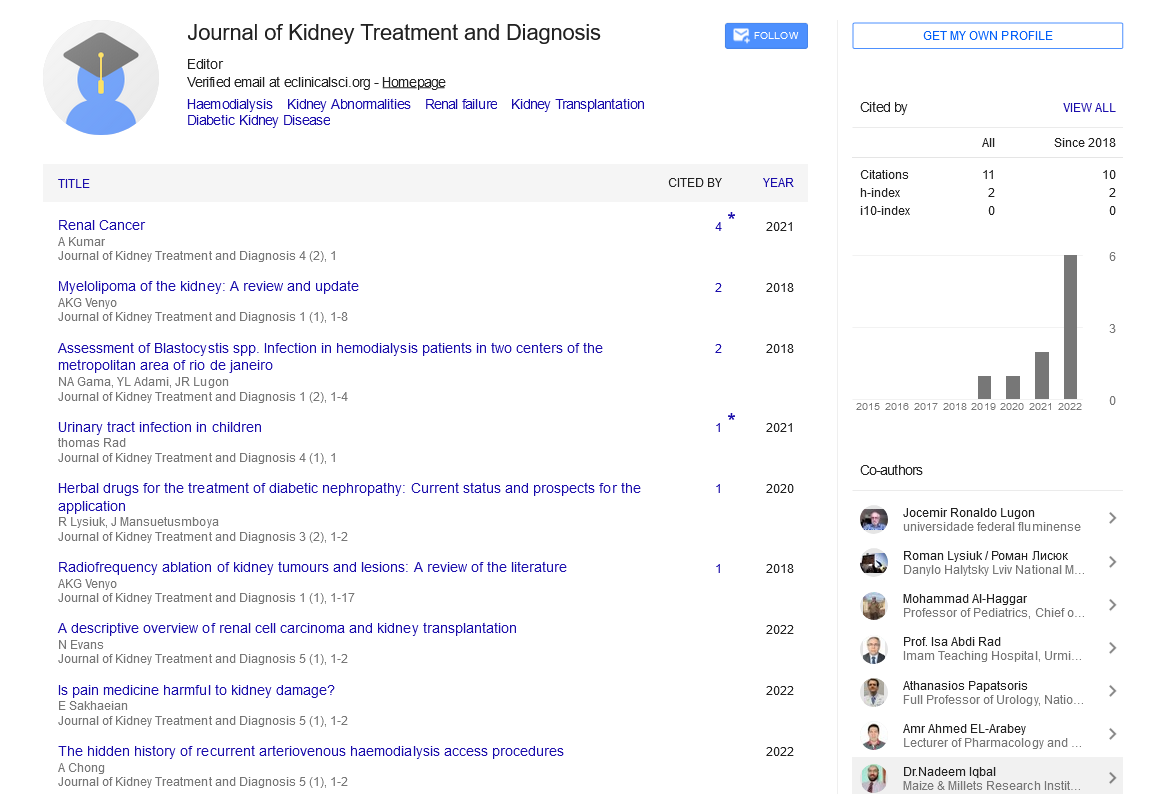
Sign up for email alert when new content gets added: Sign up
Abstract
Renal cells that produce erythropoietin: Their physiology and pathology
Author(s): Shannon Wright*, Eshcar Meisel, Orly Efros and Jonathan BleierPatients with Chronic Kidney Disease (CKD) frequently experience anemia, which raises mortality and morbidity rates. Even though our understanding of the underlying mechanisms of erythropoiesis has significantly improved, Erythropoietin (EPO) stimulating medications are currently the only option for treating renal anemia. This article's goal is to review the physiology of erythropoiesis, the functional significance of EPO, and the underlying molecular and cellular mechanisms that control the synthesis of EPO. At the mRNA level, EPO synthesis is regulated. Hypoxia Inducible Factor (HIF), a transcriptional factor, attaches to the EPO 5’ hypoxic response element when anemia or hypoxia takes place, increasing EPO gene transcription.
Pericytes are the principal producers of renal EPO. Renal anemia develops in CKD as a result of pericytes trans differentiation into myofibroblasts and consequent decline in EPO production capacity. Recent experimental and clinical research demonstrates the prolyl hydroxylase inhibitors promise effectiveness in treating renal anemia by enhancing EPO synthesis through stabilizing HIF. The investigation of EPO gene expression at the chromatin level is now possible thanks to recent developments in epigenetics. We'll talk about how restoring EPO expression is impacted by demethylating agents, offering a fresh method for treating renal anemia.
Full-Text | PDF




